Labor Day signifies the end of summer break. No more long mornings filled with reading and bird watching. Everywhere, teachers are either preparing to greet their new students or are preparing for another week of teaching. Since I’ve been back in the classroom for three weeks, I thought I would share my top five things I do with my students during the first week of school.
1. Personal Identity Wheel
This Personal Identity Wheel comes from University of Michigan College of Literature, Science, and the Arts (LSA). After students unpack their school supplies and we get organized, I immediately begin with a community-building activity. Using this wheel helps me get to know my students and helps them get to know each other. I don’t like a lot of the icebreaker activities that are posted online. Many require students to be too vulnerable too quickly. It takes time to get to know each other, and even more time to trust one another with personal information and histories.
I use a Personal Identity Wheel as a way of slowly getting to know each as we explore our identities. I want my students to know that identity is multifaceted. Depending on the grade level you teach, you can use this primary version or a social identity wheel. During our back-to-school professional learning, our staff completed both the personal and social identity wheels. The discussion questions for the social identity wheel led to some great conversations as a staff about our own social identities and how we can affirm our students’ identities in the classroom. Starting the first day of school with talk of identities communicates to my students that I affirm and respect who they are and the assets they bring to our classroom community.
2. Classroom Commitments
On the first day of school, it’s important to establish procedures for the classroom. Instead of dictating my rules for students, I begin to create a community of learners by sharing my guiding principles and classroom ethos. By sharing my own values with students, it becomes easier to create a set of collective commitments for our learning environment. I want everyone to have a vested interest in how we run our classroom. I may be the adult in the room, but I am learning alongside each of my students.
During the first week of school, I had students use IDEO’s mind mapping exercise to brainstorm collective classroom norms. We were able to use all of their divergent ideas to generate a list of meaningful agreements for the school year. In previous years, I’ve used the term, agreements. This year, I used the word, norms, but I think in the future I am going to use the word, commitments. Commitments feel more humane.
3. Annotated Syllabus
I first learned about an annotated syllabus from Dr. Remi Kalir, Associate Director, Faculty Development and Applied Research, Duke Learning Innovation & Lifetime Education. Having a syllabus is not really a K-5 thing, but I was curious how I might use it to encourage more annotation and marginalia with my students. I created my Syllabus Unicus after reading Dr. Kalir’s book, Annotation, and shared it with both students and parents. This is the first year I’ve used a syllabus to communicate how I run my classroom. I will be the first to admit that I went a bit overboard. Students latched onto the Recommended Reading section and ignored the rest. I will shorten it next year, removing the Resources That Inspire My Pedagogy section and only having students annotate specific areas that are most relevant to teaching and learning.
4. Build Trust
Within the first week of school, I want to spend time building trust with my students. If they don’t trust me, then I can’t teach them. I use Dr. Brené Brown’s BRAVING Inventory and have students make posters for each of the BRAVING letters. I want students working in small groups discussing what Boundaries, Reliability, Accountability, Vault, Integrity, Nonjudgement, and Generosity both look like and sound like in our classroom. This helps us learn how we can best support each other.
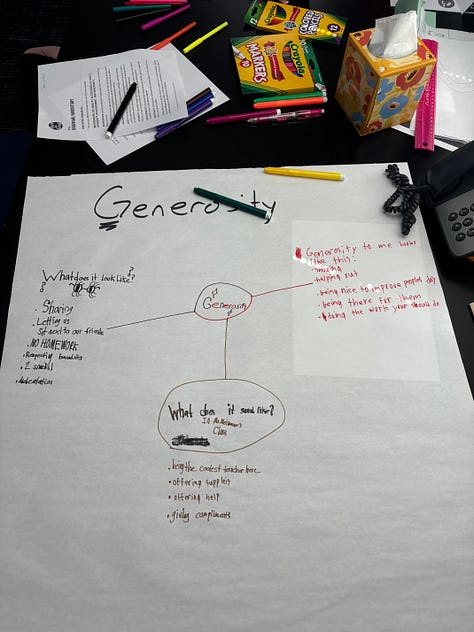
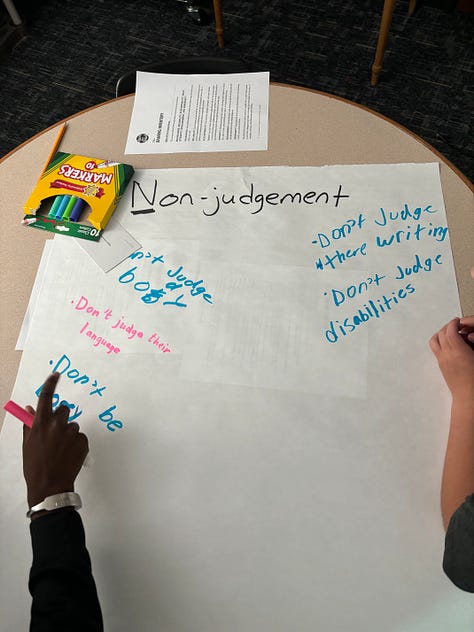
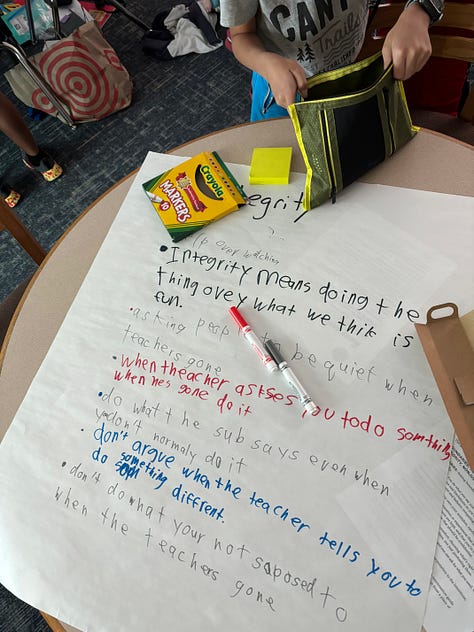




This learning experience always helps me and my students bring our most authentic selves to the classroom every day because we are learning how to trust each other. When students present their posters, we discuss each element of trusting relationships and how these apply to learning in the classroom. A few weeks ago, I posted a Note describing this learning experience and how impressed I was with my students. This activity is one of the best ways to build a trusting classroom community.
5. Read Aloud
Teachers like
have inspired me to bring Read Aloud back into my classroom. Unfortunately, our district’s lowered reading scores on standardized tests and the Science of Reading-supported curricula forced me to cut things like Read Aloud and Silent Reading in order to get through the pacing guide. No more!This year, we started the book Fish in Tree by Lynda Mullaly Hunt. So far, the class loves it! I had forgotten how much I love reading aloud and exploring a book as a classroom community. I can already relate to Ally, the protagonist, who struggles to read and gets into a lot of trouble. I can’t wait for us all to meet Mr. Daniels!
Whether tomorrow is your first day of school or you’ve been teaching for a few weeks, I wish you a great start to the year! The first week of school is always an exciting time, filled with new school supplies, nervous students, and a burgeoning classroom community. I hope that you feel connected to your students and are excited about all of the possibilities in this upcoming year.
Remember, when things get tough, as they most certainly will, mindset matters.
Have a great week!
— Adrian
Resources
Build Your Creative Confidence: Mind Maps
As David Kelley, founder of IDEO, explains, “creative confidence is the notion you have big ideas, and that you have the ability to act on them.” Mind Maps are good at facilitating divergent or unconventional thinking; lists are good for capturing the best answers among the thoughts you already have.
Dare to Lead Hub | Brené Brown
I think that Brown’s book, Dare to Lead is my favorite. When I left the classroom to be an instructional coach and district coordinator, I learned that leadership isn’t about meeting agendas, micromanaging, or board meetings. In fact, the further I got from the classroom, the less I saw of empathy and connection. Dare to Lead helped me grow my courage to do what matters most: re-humanize teaching and learning.
This Hub is filled with great resources for educators. In fact, Brown has teamed up with BetterUp to create the Daring Leadership Institute, which I believe will offer options for teachers and other educational leaders.
I highly recommend
’s Substack. His enthusiasm for reading and literature is infectious!
60-Second Strategies for Educators
I love these short videos by edutopia! There are definitely times when, during the first week of school, I need a quick activity to fill some time. These videos offer quick and easy strategies for use in my classroom. This year, I’ve already incorporated Shout-Outs! and Interview Assessments.



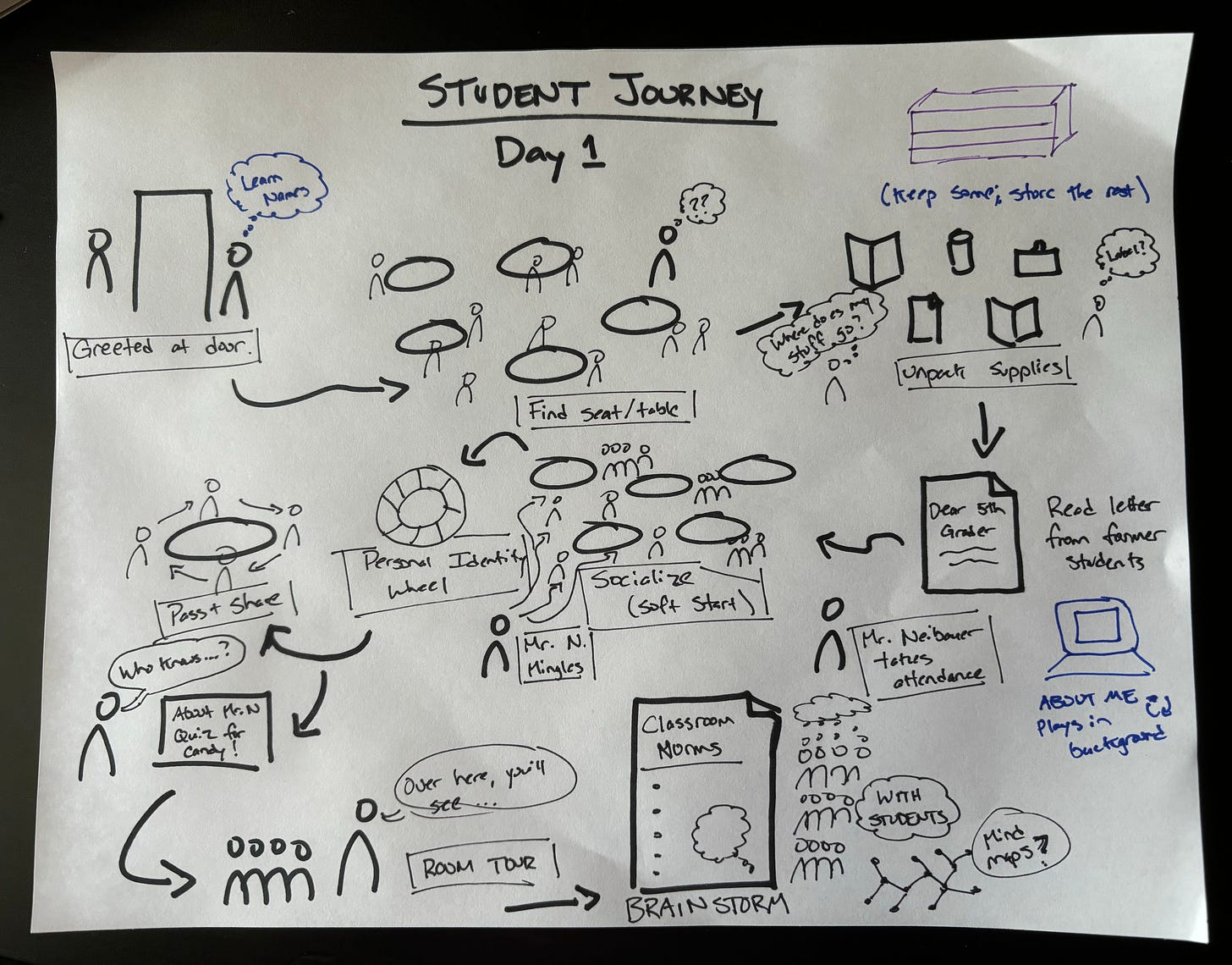





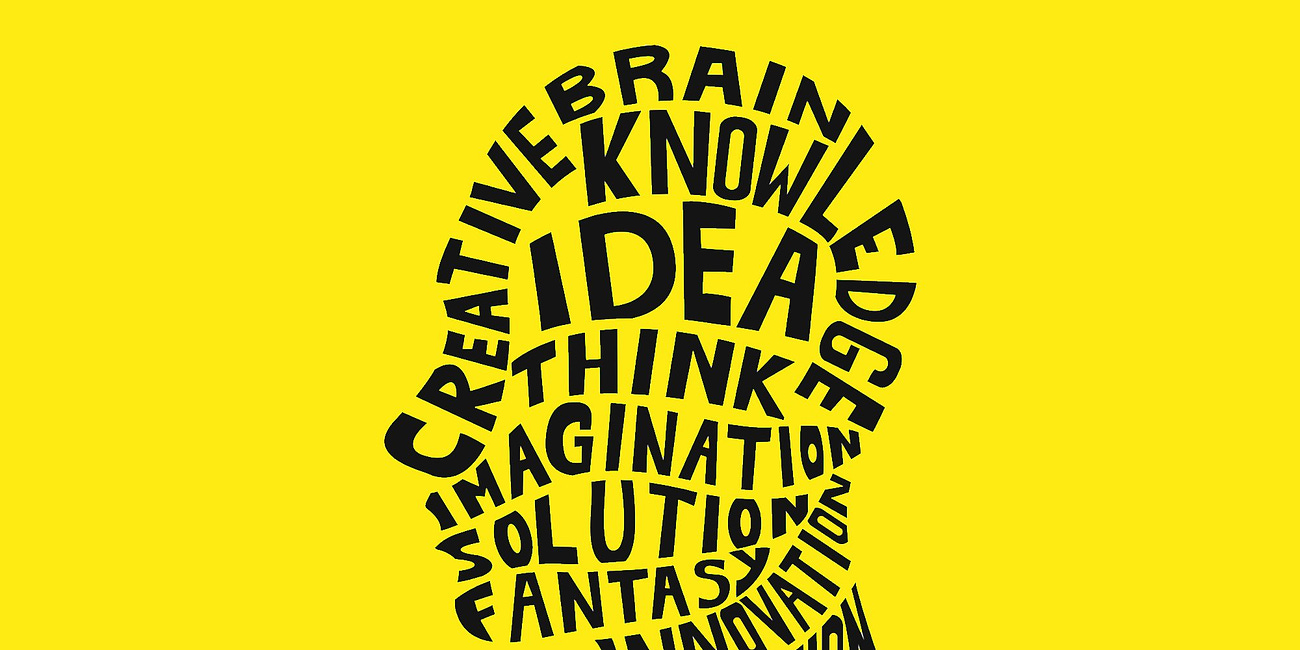

Hey, Adrian. I love your insight about rules vs. norms. Norms are "community generated." And the possibilities for class discussion! Wonderful stuff. Thank you for sharing. I've been doing some writing about the relationship between classroom management as they relate to freedom and risk in the classroom. I very much love your clarity in that regard. Thank you! --Sean
I'm going to try the annotated syllabus next week!